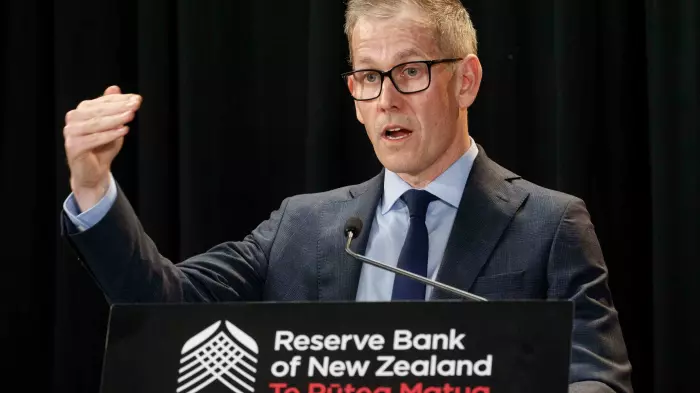Just over one in five (22%) respondents to the Working in the Public Service study said they have been bullied in their work as a public servant in the past 12 months.
About 5% of the sample reported being bullied “more frequently than now and then”, while for the remaining 17% it was a less frequent occurrence, although bullying by definition involves repeated behaviour rather than being a one-off.
The study, conducted for BusinessDesk and the Institute of Public Administration New Zealand (IPANZ) by research agency Perceptive, shows results consistent with research done in 2013 by the then-State Services Commission and in 2018 by Statistics NZ.
Overall, the data suggests that there has been little change – positive or negative – in the experience of bullying in the workplace in the public service, but that the public service appears to have a higher rate of reported bullying than the workforce as a whole.
The BusinessDesk/IPANZ study, which is based on 771 detailed responses from public servants, found that women were more likely to be victims of bullying than men – 23% vs 17% – and that both Pasifika and Asian public servants reported above-average rates – 42% and 31%, respectively.
Some 23% of Māori public servants reported experiencing bullying, against 20% for Pākehā.
A wide range of views
Consistent with findings on the other main questions posed by the study, there was a range of views across different agencies, from “concerted and impressive effort to address workplace bullying and sexual harassment” through to “a culture of fear”.
BusinessDesk has chosen not to use quotes from commenters that might identify the individuals concerned.
One concern regularly raised was that managers with a pattern of bullying or inappropriate behaviour were too likely to be moved on to another agency rather than being confronted over their actions.
“I am aware of a tier 2 person [reporting to a departmental chief executive] who has moved between similar roles while bullying staff to the extent that some required counselling and there was significant damage to the organisation’s culture and staff retention,” one respondent commented.
“This person does not appear to have experienced any negative consequences.”
Said another: “It is an open secret in Wellington that there are departments to be avoided because of their toxic work environments and yet nothing is done. The managers stay or are moved on and upward, the survivors leave.”
Getting better
However, other public servants with widely varying lengths of service saw substantial improvements.
Said one with four years’ experience: “Bullying was worse when I started in the public sector. It was seen as a joke. Notably, a few years later, a colleague apologised to me for not stepping in, and that means a lot.”
Another public servant, who said they had been continuously employed in the public service for 43 years, said they felt “without hesitation that from my perspective … the workplace environment has improved significantly”.
That said, “there remains opportunity for improvements”.
Some expressed a concern that some people saw any challenge to improve their performance at work as a form of bullying. Others saw evidence that some very senior public servants did not necessarily feel bound by normal rules of behaviour.
"There is a difference between commenting on the culture of central government and my particular agency,” said one. “I see other agencies working hard to create the best environment for their staff and the people they serve” but in their own ministry there were some very senior ministerially-appointed officers who “behave in appalling ways without consequence because no one is prepared to address this”.
Building positive behaviour
Some respondents questioned why the Public Service Commission’s inaugural census this year did not include questions covering bullying.
As BusinessDesk reported in March, while many government agencies collect some data, there is no standard format or centralised collection of bullying statistics.
The Australian public service commission has been measuring bullying for some years and reported in its 2021 census that reports of such behaviour had dropped from 17.2% to 11.7% in 2021.
At the same time, the number of bullying complaints has increased, suggesting a greater degree of willingness to call out questionable behaviour.
New initiative
The next public service commission census in NZ will include questions on bullying and harassment, and commissioner Peter Hughes said in an interview with BusinessDesk that focusing on building a positive workplace culture was the most effective way to improve behaviour.
Led by the chief executives of the Ministry for Primary Industries, Ray Smith, and the head of the Security Intelligence Service, Rebecca Kitteridge, a positive workforce behaviour initiative is rolling out through the public service.
“We’re not focusing on eradicating bullying or harassment or any of those negative things,” said Hughes, “because all the research tells us you get rid of that stuff by building a strong, positive workforce culture."
Bullying was “not OK”, said Hughes and he was “interested in building workplaces where there’s no place for that”.
At the same time, he suggested that all workplaces suffered some level of bullying.
“Is the public service worse than the private sector? I would doubt it. Does it reflect New Zealand workplaces? Yes, it does. It must do.”
Sharing expertise
Speaking to BusinessDesk, Kitteridge said: “If you look at the literature, these issues are shared across the public, private, and NGO [non-governmental organisation] sectors, so it’s not unique to us.
“But in the public service, we do talk about it in a consistent way across different agencies” and can share expertise and successes.
“Bullying and harassment, those behaviours are unacceptable, and we know that we have a way to go in the public service,” she said. “We want to create cultures of leadership that create positive behaviours.
“It’s a job that is never finished,” said Kitteridge, who is set to become deputy public service commissioner on March 1. “Because it’s cultural, it involves continuous effort to remind every level of the organisation what good behaviour looks like.”
Crucially, leadership on behaviour should come from everywhere, she said. “It is the job of everyone to call out [bad] behaviour."
Seniority as a predictor
While the Perceptive study found rates of bullying were consistent across all age groups, the relative seniority of the public servant was the best predictor of whether they were likely to experience bullying.
Among the most junior (tier 5) public servants who responded to the study, 43% reported they had been bullied in the previous 12 months – around 9% said it was occurring more frequently than "now and then".
However, at least some workers at all levels, including the most senior, reported bullying.
Who are the bullies?
Supervisors and immediate managers are the most commonly identified perpetrators of bullying.
Barely more than third of those who said they had been bullied (38%) reported it. The biggest reason given for non-reporting was that victims did not think any constructive action would be taken.
Other significant reasons included an unwillingness to go through the hassle of the process of reporting, and not wanting to upset work relationships.
Bullying could also be experienced from outside the public service, from ministers and sometimes from news media representatives pursuing stories.
“I and many others working in ministers’ offices have had to put up with a lot of bullying by both ministerial and public service staff,” said one respondent. Vacancies in one Beehive office had proven difficult to fill because of the minister’s reputation and only people who were “as tough as nails” were seconded to those roles.
And there was material for journalists to reflect on, too.
“Public servants’ wellbeing and mental health are more negatively impacted by journalists who don’t understand how central government works and choose to harass public servants/drive fake news more than anything in the workplace or culture.”
About the study
Our data collection relies significantly (with permission) on the approach and questions used by Chris Eichbaum and Richard Shaw in their 2017 work “Research on the influence of political staff in Ministerial and Prime Ministerial Offices and political neutrality in the New Zealand public service”.
Some questions follow the wording and methodology of previous work by Statistics NZ and the former State Services Commission.
Invitations to participate, with a link to an online questionnaire, were distributed on an anonymised basis in late September 2022 to individuals likely to be employees of central government in the databases of the Institute of Public Administration NZ and BusinessDesk.
Recipients were invited to complete the survey and to pass on the invitation to colleagues who work in central government.
Two reminder emails were sent over the next three weeks.
As a privacy measure, the questionnaires were not linked to individual email addresses, nor to the respondent’s employing agency.
As a result of this sample method, no weightings to the population of NZ public servants were applied, and the results should be interpreted in this context.












